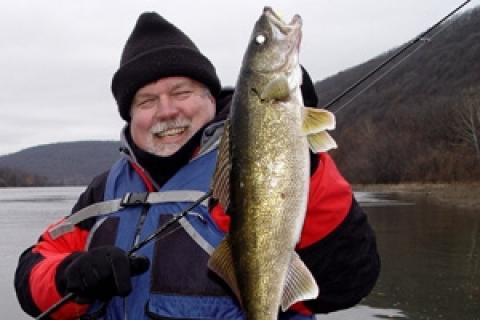
Come fall, indigenous species of minnows trapped from local creeks, found within the same watershed being fished, are forage that gamefish are accustomed to feeding on. Being wild, when approached by a predator, they react as nature programmed them to do, not in the manner of a hatchery-produced fathead or shiner. The nervous behavior of a wild creek chub gives the angler a heads-up, while providing gamefish with a more natural predator/prey response.
 |
| Torpedo-shaped minnow traps excel at collecting minnows. |
Minnows can be both trapped and netted. The first step, though, is finding a proper creek. Mud-banked, low gradient creeks tend to harbor various subspecies of creek chubs and suckers, both of which are excellent bait. Minnows in the 3- to 5-inch range are right for bass and walleyes.
Standard torpedo-shaped minnow traps excel at collecting minnows. The one-inch openings in such traps allow minnows up to 6 inches to enter. A variety of baits can be used to lure minnows into the trap; I've had great success using a cup or so of kibble-style dry dog food. Use dry dog food of a larger diameter so it doesn't flow through the trap's mesh.
In lakes, remaining living weeds tend to be found in the deeper zones of a lake that support such cover. In other words, if in your favorite lake during the summer you find weeds in water as shallow as 3 feet and as deep as 14, at this time it's more likely you'll find green weeds in the 10- to 14-foot range as opposed to shallower. Common weed varieties to find at this depth include coontail, milfoil and a range of pondweeds. The deep edge of the weedline often lies in conjunction with a dropoff into deeper water, especially during the fall. The more productive areas include bars, points and humps that have both remaining green weeds, and also a relatively sharp break leading to deeper water.
On rivers, both rigging and jigging have their applications. As water temperatures drop from the low 50s into the 40s, smallmouth bass and walleyes begin collecting in predictable locations. Deeper pools, ones exhibiting little current, provide the needed habitat at this time of year.
- 3051 views

